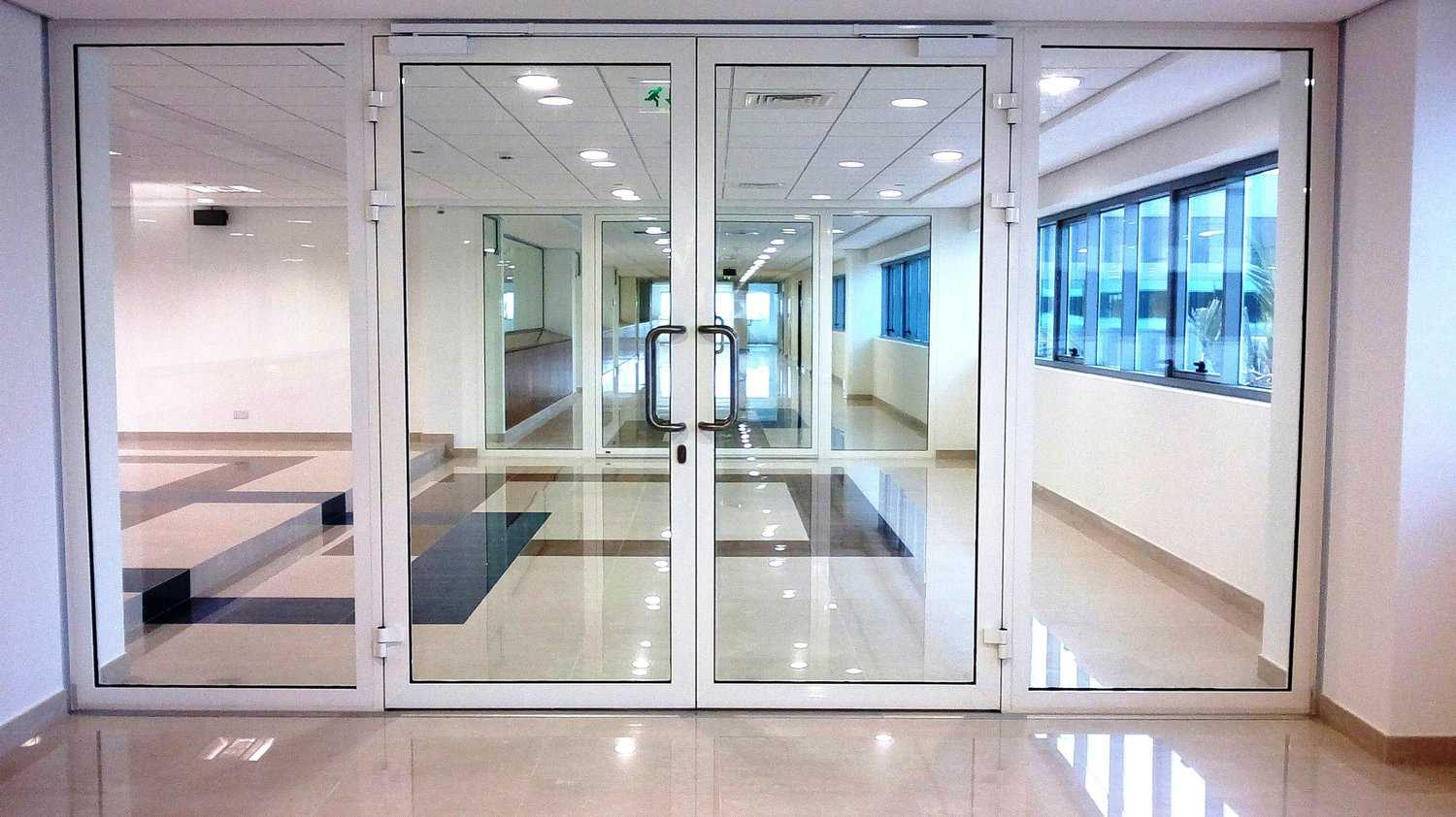Home improvement
When is Thanksgiving 2024? Traditions, History, and More
Published
4 months agoon
By
Andrew
Origin and History of Thanksgiving
The origins of Thanksgiving in the United States can be traced back to the early 17th century when English pilgrims, known as the Pilgrims, held a feast to give thanks for a bountiful harvest. This event is often regarded as the first Thanksgiving and took place in 1621 in Plymouth, Massachusetts.
In 1863, President Abraham Lincoln proclaimed Thanksgiving as a national holiday, to be celebrated on the last Thursday of November. In 1941, Congress passed a law establishing Thanksgiving as a federal holiday, to be observed on the fourth Thursday of November each year.
Date of Thanksgiving 2024
In 2024, Thanksgiving will be celebrated on Thursday, November 28th. This date marks the official start of the holiday season in the United States, with many people traveling to be with their loved ones and partake in the festivities.
Traditional Thanksgiving Foods
A traditional Thanksgiving meal typically includes turkey, stuffing, cranberry sauce, mashed potatoes, and pumpkin pie. Turkey is the centerpiece of the meal and is often accompanied by gravy made from the pan drippings.
Modern Thanksgiving Traditions
In addition to the traditional meal, modern Thanksgiving celebrations often include watching the Macy’s Thanksgiving Day Parade, which has been held annually in New York City since 1924. Another popular tradition is watching football, with several NFL games taking place on Thanksgiving Day.
Many people also participate in volunteer activities on Thanksgiving, such as serving meals at homeless shelters or participating in food drives to help those in need.
Thanksgiving Around the World
While Thanksgiving is primarily celebrated in the United States and Canada, similar holidays exist in other parts of the world. For example, the Harvest Festival is celebrated in the United Kingdom, and Oktoberfest is celebrated in Germany.
Conclusion
Thanksgiving is a time-honored tradition that brings families and communities together to give thanks and celebrate the harvest season. Whether you’re enjoying a traditional meal with loved ones or volunteering to help those in need, Thanksgiving is a time to reflect on the blessings in your life and express gratitude.
FAQs
- What day is Thanksgiving in 2024?
- Thanksgiving will be celebrated on Thursday, November 28th, 2024.
- What is the history of Thanksgiving?
- Thanksgiving has its origins in a harvest festival celebrated by the Pilgrims in 1621. It was later proclaimed a national holiday by President Abraham Lincoln in 1863.
- What are some traditional Thanksgiving foods?
- Traditional Thanksgiving foods include turkey, stuffing, cranberry sauce, mashed potatoes, and pumpkin pie.
- What are some modern Thanksgiving traditions?
- Modern Thanksgiving traditions include watching the Macy’s Thanksgiving Day Parade, watching football, and volunteering to help those in need.
- How is Thanksgiving celebrated around the world?
- While Thanksgiving is primarily celebrated in the United States and Canada, similar holidays exist in other parts of the world, such as the Harvest Festival in the United Kingdom and Oktoberfest in Germany.
You may like
Home improvement
Discover the Benefits of Quartz Countertops with BNJ Granite & Cabinets in Long Island, NY
Published
3 days agoon
July 23, 2024By
IQnewswire
In the bustling homes of Long Island, NY, the kitchen and bathroom are pivotal spaces where functionality meets style. One of the most crucial elements in these areas is the countertop, and no material has proven to be as versatile, durable, and aesthetically pleasing as quartz. At BNJ Granite & Cabinets, we specialize in providing top-notch quartz countertops that transform your kitchen and bathroom into elegant and efficient spaces. This article explores the many benefits of quartz countertops, the meticulous process involved in their installation and fabrication, and why BNJ Granite & Cabinets is the ideal choice for your next home improvement project.
Why Quartz Countertops Are an Excellent Choice
Quartz countertops are engineered from a combination of natural quartz crystals and resins, resulting in a product that is both stunning and robust. Here are some key reasons why quartz countertops are a preferred choice for homeowners:
1. Superior Durability: Quartz is one of the hardest minerals found in nature, making quartz countertops highly resistant to scratches, chips, and cracks. This durability ensures that your countertops can withstand the daily rigors of a busy kitchen or bathroom.
2. Aesthetic Appeal: Available in a wide variety of colors and patterns, quartz countertops can mimic the look of natural stone like marble or granite or provide a sleek, modern appearance. This versatility allows homeowners to choose a design that perfectly complements their interior decor.
3. Low Maintenance: Unlike natural stone countertops, quartz does not require regular sealing. Its non-porous surface makes it resistant to stains, bacteria, and mold, making it incredibly easy to clean and maintain. A quick wipe with mild soap and water is all it takes to keep it looking pristine.
4. Hygienic Surface: The non-porous nature of quartz prevents the absorption of liquids, reducing the risk of bacterial growth. This feature makes quartz countertops a hygienic and safe option for food preparation areas.
The Expertise of BNJ Granite & Cabinets
At BNJ Granite & Cabinets, we pride ourselves on our expertise in quartz countertop installation and fabrication. Serving the Long Island community, we offer a range of services designed to meet the unique needs of each homeowner. Here’s why BNJ Granite & Cabinets should be your go-to choice for quartz countertops:
1. Skilled Craftsmanship: Our team of professionals brings years of experience and meticulous attention to detail to every project. We ensure that each countertop is crafted to perfection, with precise cuts and seamless finishes that enhance the beauty of your space.
2. Personalized Design Solutions: We understand that every home is unique, and we offer customized design solutions to match your specific needs and preferences. Whether you’re looking for a classic, timeless look or a contemporary, bold design, we can create the perfect countertops to bring your vision to life.
3. Comprehensive Service: From the initial consultation to the final installation, BNJ Granite & Cabinets provides a comprehensive service that covers every aspect of your project. We work closely with you to ensure a smooth and stress-free experience, delivering results that exceed your expectations.
4. Local Expertise: As a local business in Long Island, NY, we have a deep understanding of the needs and preferences of our community. We are committed to providing top-quality products and services that enhance the homes of our neighbors.
The Process of Installing Quartz Countertops
Installing quartz countertops involves several detailed steps, each requiring precision and expertise. Here’s an overview of what you can expect when you choose BNJ Granite & Cabinets for your countertop installation:
1. Initial Consultation: Our process begins with a thorough consultation to understand your needs, preferences, and budget. We discuss your design ideas and provide expert recommendations to help you choose the perfect quartz countertop for your space.
2. Measurement and Template Creation: Accurate measurements are crucial for a perfect fit. Our team visits your home to take detailed measurements and create a template. This template guides the cutting of the quartz slab to ensure precise dimensions.
3. Selecting Your Quartz Slab: We offer a wide selection of high-quality quartz slabs in various colors and patterns. You can visit our showroom to choose the slab that best matches your design aesthetic. Our experts are available to provide guidance and recommendations.
4. Fabrication: Using the template, our skilled fabricators cut and shape the quartz slab to fit your kitchen or bathroom perfectly. This process includes creating cutouts for sinks, cooktops, and other fixtures.
5. Edging and Finishing: The edges of the countertops are shaped and polished according to your chosen edge profile. Popular options include straight, beveled, bullnose, and ogee edges. The surface is then polished to achieve the desired finish, whether it’s glossy, matte, or textured.
6. Quality Check: Each piece undergoes a rigorous quality check to ensure it meets our high standards. We inspect for any defects or imperfections and make necessary adjustments to ensure a flawless finish.
7. Installation: On installation day, our team carefully transports the countertops to your home and secures them in place. Seams are joined with epoxy resin, and the edges around sinks and fixtures are sealed to prevent water damage.
8. Final Inspection: Once the installation is complete, we perform a final inspection to ensure everything is perfect. We also provide you with maintenance tips to keep your countertops looking beautiful for years to come.
Maintaining Your Quartz Countertops
While quartz countertops are low maintenance, following these tips can help keep them looking their best:
1. Regular Cleaning: Clean your quartz countertops regularly with mild soap and water. Avoid using harsh chemicals or abrasive cleaners that can damage the surface.
2. Avoid Heat Damage: While quartz is heat resistant, prolonged exposure to high temperatures can cause damage. Use trivets or hot pads when placing hot pots and pans on the countertop.
3. Use Cutting Boards: Avoid cutting directly on the quartz surface to prevent scratches. Always use cutting boards when preparing food.
4. Prevent Stains: Although quartz is resistant to stains, it’s best to wipe up spills immediately to prevent potential staining. Avoid using bleach or other harsh chemicals on the surface.
Trends in Quartz Countertops
Keeping up with the latest trends in quartz countertops can help you choose a design that not only meets your needs but also adds value to your home. Here are some current trends:
1. Bold Patterns: Quartz countertops with bold, dramatic patterns are becoming increasingly popular. These patterns can create a striking focal point in your kitchen.
2. Matte Finishes: Matte finishes are gaining popularity as they offer a sleek, modern look that is less reflective than polished surfaces.
3. Integrated Sinks: Integrated sinks made from the same quartz material as the countertop provide a seamless, cohesive look that is both functional and aesthetically pleasing.
4. Sustainable Options: Eco-friendly quartz countertops made from recycled materials are gaining traction among environmentally conscious homeowners.
Comparing Quartz to Other Countertop Materials
When choosing countertops, it’s important to compare quartz with other popular materials to make an informed decision. Here’s how quartz compares to granite, marble, and laminate:
Quartz vs. Granite:
- Durability: Both quartz and granite are highly durable, but quartz is more resistant to chipping and cracking.
- Maintenance: Quartz requires less maintenance as it doesn’t need sealing, unlike granite.
- Appearance: Granite offers natural variations, while quartz provides consistent color and pattern.
Quartz vs. Marble:
- Durability: Quartz is more durable and less prone to scratching and staining compared to marble.
- Maintenance: Marble requires regular sealing and is more susceptible to stains and etching.
- Appearance: Marble offers a classic, luxurious look, while quartz can mimic marble’s appearance without the high maintenance.
Quartz vs. Laminate:
- Durability: Quartz is far more durable than laminate and can withstand higher levels of wear and tear.
- Maintenance: Both materials are low maintenance, but quartz offers better resistance to heat and scratches.
- Appearance: Quartz offers a more high-end look compared to laminate, which can look less luxurious.
Conclusion
Quartz countertops offer an exceptional combination of beauty, durability, and low maintenance, making them an ideal choice for any kitchen or bathroom. With BNJ Granite & Cabinets, you can be assured of top-notch quality, expert craftsmanship, and exceptional service. Whether you’re renovating your entire kitchen or simply updating your countertops, our team is here to help you every step of the way. Invest in quartz countertops to enjoy a beautiful, functional, and long-lasting addition to your Long Island home. Contact BNJ Granite & Cabinets today to start your journey towards a stunning new kitchen or bathroom.
Home improvement
All-Inclusive Guide to Window Repairs, Glass Door Fittings, and Custom Glass Projects
Published
3 days agoon
July 23, 2024By
IQnewswire
Glass is an essential component in modern architecture, playing a vital role in both residential and commercial properties. It provides natural light, enhances aesthetics, and contributes to energy efficiency. However, glass installations require proper maintenance and occasional repairs to ensure their functionality and longevity. This comprehensive guide explores the importance of window repairs, glass door fittings, and custom glass projects, highlighting their benefits and the need for professional services.
The Importance of Window Repairs
Windows are a crucial part of any building, providing ventilation, insulation, and a view of the outdoors. Over time, windows can develop issues that compromise their functionality and efficiency. Understanding the importance of window repairs is essential for maintaining the integrity of your property.
- Common Window Problems: Windows can suffer from various issues, including broken panes, cracked seals, and malfunctioning hardware. These problems can lead to drafts, energy loss, and security concerns.
- Energy Efficiency: Damaged windows can significantly affect a building’s energy efficiency. Cracked or broken seals allow air to escape, leading to increased heating and cooling costs. Repairing or replacing faulty windows helps maintain a comfortable indoor temperature and reduces energy consumption.
- Security: Windows are a potential entry point for intruders. Broken locks, latches, or panes can compromise the security of your home or business. Prompt window repairs enhance the safety and security of your property.
- Aesthetic Appeal: Windows contribute to the overall aesthetic of a building. Damaged or foggy windows can detract from the appearance of your property. Repairing windows restores their clarity and visual appeal, enhancing the curb appeal of your home or business.
The Process of Window Repairs
Professional window repairs involve several steps to ensure the problem is accurately diagnosed and effectively resolved. Here’s an overview of the typical window repair process:
- Inspection and Diagnosis: A thorough inspection is conducted to identify the specific issues affecting the windows. This may include checking for cracks, leaks, fogging, and hardware malfunctions.
- Material Selection: The appropriate materials are chosen based on the type of window and the extent of the damage. This may involve selecting new panes, seals, or hardware components.
- Removal of Damaged Components: Damaged glass, seals, or hardware are carefully removed to prevent further damage to the window frame or surrounding structure.
- Installation of New Components: New glass panes, seals, or hardware are installed, ensuring a secure fit and proper alignment. This step requires precision to maintain the window’s functionality and appearance.
- Sealing and Insulation: Proper sealing and insulation are crucial to prevent drafts and moisture infiltration. High-quality sealants and weatherstripping are used to enhance the window’s energy efficiency and durability.
- Final Inspection and Cleanup: A final inspection is performed to ensure the repairs are successful and the window operates smoothly. The work area is cleaned up, and any debris is removed.
Glass Door Fittings: Enhancing Access and Security
Glass doors are a popular choice for both residential and commercial properties due to their aesthetic appeal and functionality. Proper fitting and maintenance of glass doors are essential for ensuring their performance and security.
- Types of Glass Doors: Glass doors come in various styles, including sliding doors, hinged doors, and bi-fold doors. Each type has its unique features and applications, making them suitable for different settings.
- Benefits of Glass Doors: Glass doors offer several benefits, including increased natural light, enhanced views, and a modern aesthetic. They can also create a seamless connection between indoor and outdoor spaces.
- Common Issues with Glass Doors: Like windows, glass doors can develop problems over time. Common issues include misalignment, broken locks, cracked glass, and faulty tracks or rollers.
- The Importance of Professional Fittings: Proper fitting of glass doors is crucial for their functionality and security. Professional installation ensures that the doors are correctly aligned, securely mounted, and operate smoothly.
The Process of Glass Door Fittings
Installing or repairing glass doors involves several steps to ensure they function correctly and safely. Here’s an overview of the typical process for glass door fittings:
- Assessment and Measurement: Accurate measurements are taken to ensure the door fits perfectly within the designated space. This step is crucial for preventing gaps and ensuring smooth operation.
- Selection of Materials: The appropriate type of glass and hardware is selected based on the door’s design and the specific needs of the property. This may include tempered or laminated glass for enhanced safety.
- Preparation of the Opening: The door frame or opening is prepared to accommodate the new glass door. This may involve reinforcing the frame, ensuring it is level, and installing any necessary supports.
- Installation of the Door: The glass door is carefully installed, ensuring it is properly aligned and securely mounted. This step requires precision to prevent misalignment and ensure smooth operation.
- Hardware Installation: Locks, handles, and other hardware components are installed, ensuring they function correctly and provide adequate security.
- Final Adjustments and Testing: The door is tested to ensure it opens and closes smoothly, without any obstructions or misalignment. Any necessary adjustments are made to optimize its performance.
Custom Glass Projects: Tailored Solutions for Unique Needs
Custom glass projects offer tailored solutions to meet the specific needs and preferences of property owners. These projects can enhance the functionality and aesthetics of a space, providing unique and innovative design options.
- Applications of Custom Glass: Custom glass can be used in various applications, including partitions, backsplashes, shower enclosures, and decorative panels. These installations add a touch of elegance and sophistication to any space.
- Benefits of Custom Glass: Custom glass projects offer several advantages, including personalized design, enhanced aesthetics, and improved functionality. They allow property owners to create unique and visually stunning environments.
- The Role of Professional Services: Professional glass installation Dupont and repair services are essential for the success of custom glass projects. Experts have the skills and experience to ensure the glass is installed correctly and meets the desired specifications.
The Process of Custom Glass Projects
Custom glass projects involve several steps to ensure the final product meets the client’s needs and expectations. Here’s an overview of the typical process for custom glass installations:
- Consultation and Design: The process begins with a consultation to understand the client’s vision and requirements. A detailed design plan is created, incorporating the client’s preferences and specifications.
- Material Selection: The appropriate type of glass and finishes are selected based on the design and intended application. This may include options like frosted, etched, or colored glass.
- Measurement and Template Creation: Precise measurements are taken to create templates for the custom glass pieces. This step ensures accuracy and helps avoid errors during the cutting and installation process.
- Fabrication of Glass Pieces: The glass is cut, shaped, and finished according to the design specifications. Advanced techniques and equipment are used to achieve the desired shapes and finishes.
- Preparation of the Installation Area: The installation area is prepared to accommodate the custom glass pieces. This may involve reinforcing structures, ensuring level surfaces, and installing necessary supports.
- Installation of Custom Glass: The custom glass pieces are carefully installed, ensuring they fit perfectly and are securely mounted. Precision and attention to detail are crucial to achieving the desired outcome.
- Sealing and Finishing: Proper sealing and finishing are essential to enhance the durability and appearance of the custom glass installation. High-quality sealants and finishes are used to protect the glass and ensure a flawless look.
- Final Inspection and Cleanup: A final inspection is conducted to ensure the installation meets the client’s expectations and functions correctly. The work area is cleaned up, and any debris is removed.
Benefits of Professional Glass Services
Utilizing professional glass installation and repair services offers numerous benefits for both residential and commercial properties:
- Enhanced Aesthetics: Professional services ensure that glass installations are visually appealing and enhance the overall look of the property.
- Increased Property Value: High-quality glass installations can boost the value of a property, making it more attractive to potential buyers or tenants.
- Improved Energy Efficiency: Properly installed and repaired windows and doors contribute to better insulation and energy efficiency, reducing heating and cooling costs.
- Safety and Security: Professional services ensure that glass installations are safe and secure, reducing the risk of accidents and unauthorized entry.
- Customization and Personalization: Professional services offer the flexibility to customize glass installations to meet specific needs and preferences, creating unique and functional spaces.
Choosing the Right Glass Service Provider
Selecting the right glass service provider is crucial for ensuring the quality and success of glass installation and repair projects. Here are some factors to consider when choosing a service provider:
- Experience and Expertise: Look for providers with extensive experience and expertise in the industry. Check for certifications and qualifications that demonstrate their capabilities.
- Customer Reviews: Reading customer reviews and testimonials can provide insights into the provider’s reputation and the quality of their services.
- Range of Services: Choose a provider that offers a comprehensive range of services, including residential, commercial, and custom glass solutions. This ensures all your glass needs can be met.
- Quality of Materials: Ensure the provider uses high-quality materials for installations and repairs. Quality materials contribute to the durability and longevity of the glass.
- Warranty and Guarantees: Look for providers that offer warranties and guarantees on their work. This provides peace of mind and protection against future issues.
Future Trends in Glass Installation and Repair
The glass industry continues to evolve, with emerging trends and technologies shaping the future of glass installation and repair services. Staying informed about these trends can help property owners make better decisions for their glass needs.
- Smart Glass Technology: Smart glass technology allows glass to change its properties in response to external stimuli, providing benefits such as privacy, energy efficiency, and enhanced security.
- Sustainable Glass Solutions: Eco-friendly glass options, such as recycled glass and energy-efficient products, are gaining popularity. Sustainable glass solutions reduce environmental impact and contribute to green building practices.
- Innovative Design Applications: Advances in glass technology enable innovative design applications, such as curved glass, self-cleaning glass, and integrated solar panels. These innovations offer new possibilities for both residential and commercial properties.
- Enhanced Safety Features: Developments in safety glass, such as laminated and tempered glass, provide increased protection against breakage and impact. These features enhance the safety and security of glass installations.
Conclusion
Window repairs, glass door fittings, and custom glass projects are essential for maintaining and enhancing the quality of residential and commercial properties. Professional glass installation and repair services ensure precision, safety, and quality, while custom glass solutions offer unique and innovative design options. By understanding the importance of these services and staying informed about the latest trends in glass technology, property owners can make informed decisions to improve their buildings and maximize their investment. Proper maintenance of glass installations will extend their life and keep them looking their best for years to come.
Home improvement
Experience Pristine Windows with CSI Carpet Cleaners’ Expert Window Washing Services in Maui, HI
Published
3 days agoon
July 23, 2024By
IQnewswire
Windows are more than just architectural features; they are gateways to the world outside and play a crucial role in enhancing the beauty and ambiance of any home. Clean windows allow natural light to brighten your living spaces and offer clear, unobstructed views of the stunning Maui, HI scenery. Achieving and maintaining spotless, streak-free windows, however, requires professional expertise. CSI Carpet Cleaners, renowned for their comprehensive cleaning services, offers exceptional window washing services designed to meet the unique needs of Maui residents. This article explores the benefits and processes of CSI Carpet Cleaners’ window washing services and how they can transform your home.
Comprehensive Window Washing Services
CSI Carpet Cleaners in Maui, HI, provides an extensive range of window washing services that cater to both residential and commercial properties. Their approach ensures that every window, regardless of size or height, is left sparkling clean.
Detailed Description of the Window Washing Services Offered
CSI Carpet Cleaners offers a variety of window washing services to suit different needs:
- Interior and Exterior Window Cleaning: Comprehensive cleaning of both sides of the windows to ensure complete transparency and cleanliness. This service includes cleaning window frames and sills to remove accumulated dirt and grime.
- High-Rise Window Cleaning: Specialized services for high-rise buildings and hard-to-reach windows. The team uses advanced equipment and techniques to safely and effectively clean high windows.
- Skylight and Glass Door Cleaning: Detailed cleaning of skylights and glass doors to maximize natural light and maintain a pristine appearance.
- Screen Cleaning: Removing and thoroughly cleaning window screens to ensure they are free from dust, dirt, and pollen.
Emphasis on Achieving Spotless and Streak-Free Windows
CSI Carpet Cleaners prioritizes achieving spotless and streak-free windows. Their trained professionals use high-quality cleaning solutions and advanced techniques to ensure that every window is cleaned to perfection. The use of squeegees, microfiber cloths, and eco-friendly cleaning products helps eliminate streaks and spots, leaving windows crystal clear.
Use of Specialized Equipment and Eco-Friendly Cleaning Products
To provide the best results, CSI Carpet Cleaners uses state-of-the-art equipment and eco-friendly cleaning products. High-powered water-fed poles, specialized squeegees, and non-toxic cleaning solutions ensure a thorough and safe cleaning process. These tools and products are designed to clean effectively without harming the environment or your home.
Benefits of Choosing CSI Carpet Cleaners
Choosing CSI Carpet Cleaners for your window washing Maui needs offers numerous advantages. Their commitment to excellence, customer satisfaction, and competitive pricing makes them a top choice for homeowners.
Professional Expertise and Trained Staff
CSI Carpet Cleaners employs a team of highly trained and experienced professionals who are dedicated to delivering exceptional results. Their expertise ensures that each window washing job is performed with precision and care. The team is well-versed in the best practices for cleaning various types of windows and can handle any challenges that arise.
Commitment to Customer Satisfaction
Customer satisfaction is a top priority for CSI Carpet Cleaners. They strive to exceed expectations with every service, providing personalized attention and addressing any specific needs or concerns. Their commitment to quality ensures that customers are always happy with the results.
Competitive Pricing and Flexible Scheduling
CSI Carpet Cleaners offers competitive pricing for their window washing services, making professional cleaning accessible to all homeowners. They also provide flexible scheduling options to accommodate your busy lifestyle. Whether you need a one-time cleaning or regular maintenance, CSI Carpet Cleaners can tailor their services to fit your schedule and budget.
The Process of Window Washing
CSI Carpet Cleaners follows a meticulous and systematic process to ensure that every window is cleaned to the highest standards. Here is an overview of their window washing process:
Step-by-Step Overview of the Window Washing Process
- Initial Inspection and Preparation: The team conducts a thorough inspection of your windows to assess their condition and identify any specific cleaning needs. They also prepare the surrounding area to protect surfaces from water and cleaning solution.
- Dust and Cobweb Removal: Before applying any cleaning solution, the team removes dust, cobwebs, and loose debris from the window surface and frames using dry microfiber cloths or dusters.
- Application of Cleaning Solution: The team applies a high-quality, eco-friendly cleaning solution to the windows using scrubbers or sponges. This solution is designed to break down dirt, grime, and mineral deposits without leaving residue.
- Scrubbing and Stain Removal: Stubborn spots and stains are scrubbed thoroughly to ensure complete removal. Special attention is given to high-traffic areas and windows exposed to environmental pollutants.
- Squeegeeing for Streak-Free Results: The team uses squeegees to remove the cleaning solution and water from the window surface in smooth, continuous motions. This technique ensures a streak-free finish.
- Drying and Detailing: The edges and corners of the windows are dried using lint-free microfiber cloths to prevent water spots. Window frames and sills are also cleaned and wiped down.
- Final Inspection and Touch-Ups: The team conducts a final inspection to ensure all windows are spotless and streak-free. Any remaining spots or streaks are addressed, and touch-ups are performed as needed.
Techniques Used to Ensure Streak-Free and Spotless Results
CSI Carpet Cleaners employs advanced techniques to achieve streak-free and spotless windows. These techniques include the use of high-quality squeegees, microfiber cloths, and eco-friendly cleaning solutions. The team also follows best practices for window washing, such as using vertical and horizontal strokes with the squeegee and ensuring proper drying methods.
Attention to Detail in Cleaning Window Frames and Sills
CSI Carpet Cleaners understands the importance of a thorough clean, which is why they also focus on cleaning window frames and sills. Removing dirt, dust, and grime from these areas enhances the overall appearance of your windows and helps maintain their condition.
Enhancing Your Home with Clean Windows
Clean windows offer numerous benefits that go beyond aesthetics. They improve the overall ambiance of your home, enhance natural light, and contribute to a healthier living environment.
Aesthetic and Health Benefits of Clean Windows
- Enhanced Natural Light: Clean windows allow more natural light to enter your home, creating a brighter and more inviting atmosphere. Natural light can improve mood, boost productivity, and reduce the need for artificial lighting.
- Improved Indoor Air Quality: Regular window cleaning removes dust, pollen, and other allergens that can accumulate on windows and window sills. This helps improve indoor air quality and reduces allergy symptoms and respiratory issues.
- Clear Views and Connection to the Outdoors: Clean windows provide unobstructed views of the beautiful Maui landscape, enhancing your connection to the outdoors. Whether you have a garden, ocean view, or simply enjoy watching the world go by, clean windows allow you to fully appreciate these sights.
Improved Natural Light and Enhanced Curb Appeal
- Brighter Living Spaces: Clean windows brighten up your living spaces, making them feel more spacious and welcoming. Enhanced natural light can also highlight the beauty of your home’s interior design.
- Boosted Curb Appeal: The appearance of your windows significantly impacts your home’s curb appeal. Clean, spotless windows make a positive first impression on visitors and potential buyers. Regular professional window washing helps maintain the aesthetic appeal of your home, potentially increasing its market value.
Long-Term Maintenance and Preservation of Windows
- Preventing Damage: Regular window washing helps prevent damage to window glass and frames caused by dirt, grime, and mineral deposits. Removing these contaminants regularly prevents etching, scratches, and other forms of deterioration.
- Early Detection of Issues: Regular professional cleaning allows you to spot potential issues early, such as cracks, leaks, or worn seals, which can be addressed before they lead to more significant problems.
Conclusion
CSI Carpet Cleaners in Maui, HI, offers comprehensive window washing services designed to meet the unique needs of homeowners. Their professional expertise, commitment to customer satisfaction, and use of specialized equipment and eco-friendly cleaning products ensure that every window is left spotless and streak-free.
Clean windows significantly enhance the beauty, ambiance, and health of your home. By choosing CSI Carpet Cleaners, you can enjoy the benefits of professional window washing services that brighten your living spaces, improve indoor air quality, and boost your home’s curb appeal.
For residents in Maui, HI, CSI Carpet Cleaners is the ultimate choice for achieving and maintaining pristine windows. Experience the difference of professional cleaning and enjoy the satisfaction of spotless, streak-free windows that enhance the overall beauty and comfort of your home. Contact CSI Carpet Cleaners today to schedule your window washing service and transform your home with their expert cleaning solutions.
Trending
-

 Entertainment3 months ago
Entertainment3 months agoUnveiling the Magic of Tex9.net: Your Ultimate Gateway to Nintendo Adventures
-

 Entertainment3 months ago
Entertainment3 months agoTex9.net PlayStation: Revolutionizing Gaming in the Cloud Era
-

 Entertainment4 months ago
Entertainment4 months agoCoomerparty: Understanding the Phenomenon
-

 Tech3 months ago
Tech3 months agoUnlock the Power of 2131953663: A Comprehensive Guide
-

 Fashion5 months ago
Fashion5 months agoFyges Review: Unveiling the Power of User Feedback
-

 Entertainment2 months ago
Entertainment2 months agoWhat Is Picuki And How Does It Work? + 8 Alternatives
-

 Entertainment3 months ago
Entertainment3 months agoReconnecting with Family: Finding Meaning in “komik hisashiburi ni jikka ni kaettara otouto ga ts shiteta”
-

 Life Style3 months ago
Life Style3 months agoUnveiling the Mysteries of Silent Hill: A Geek’s Guide to Survival




